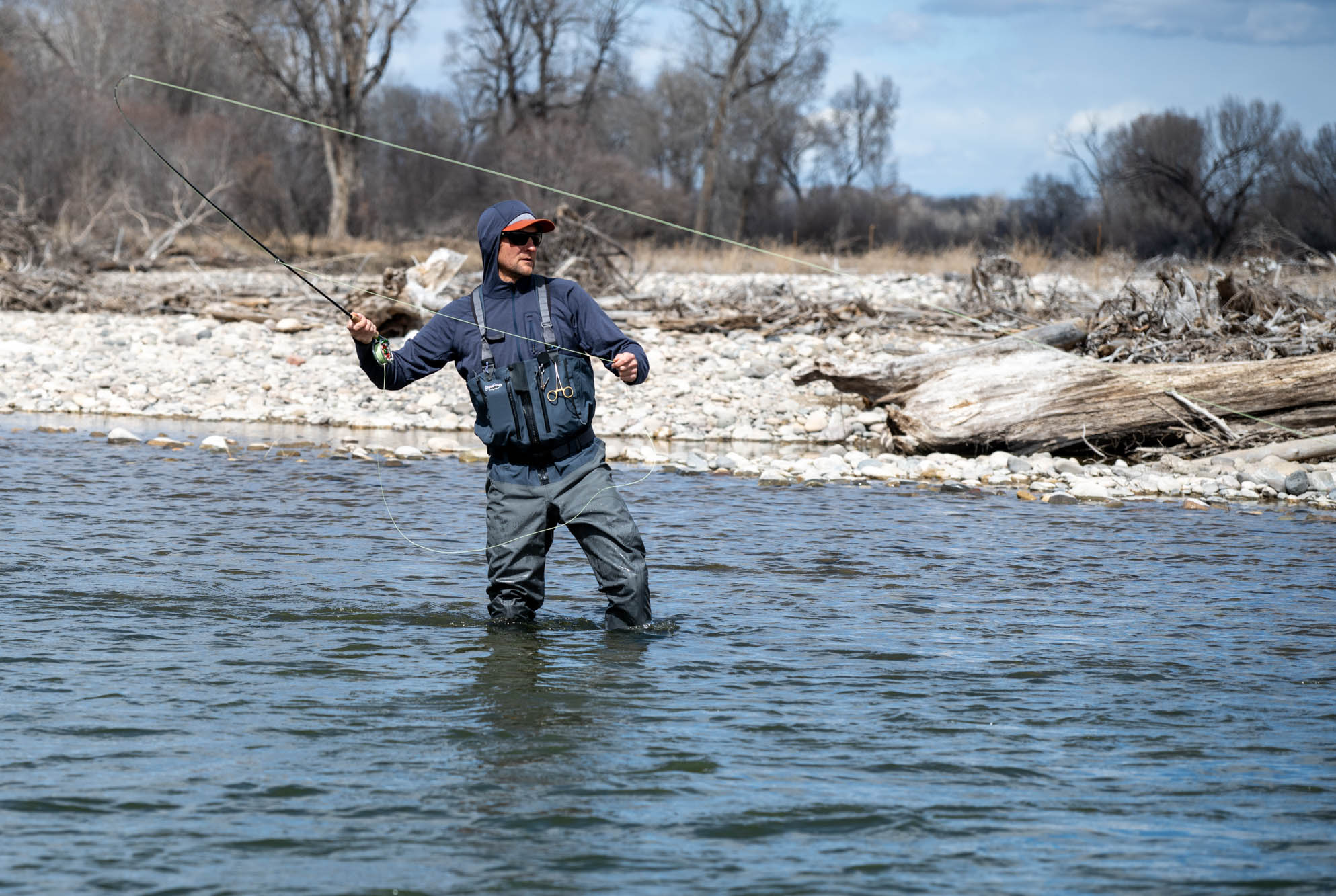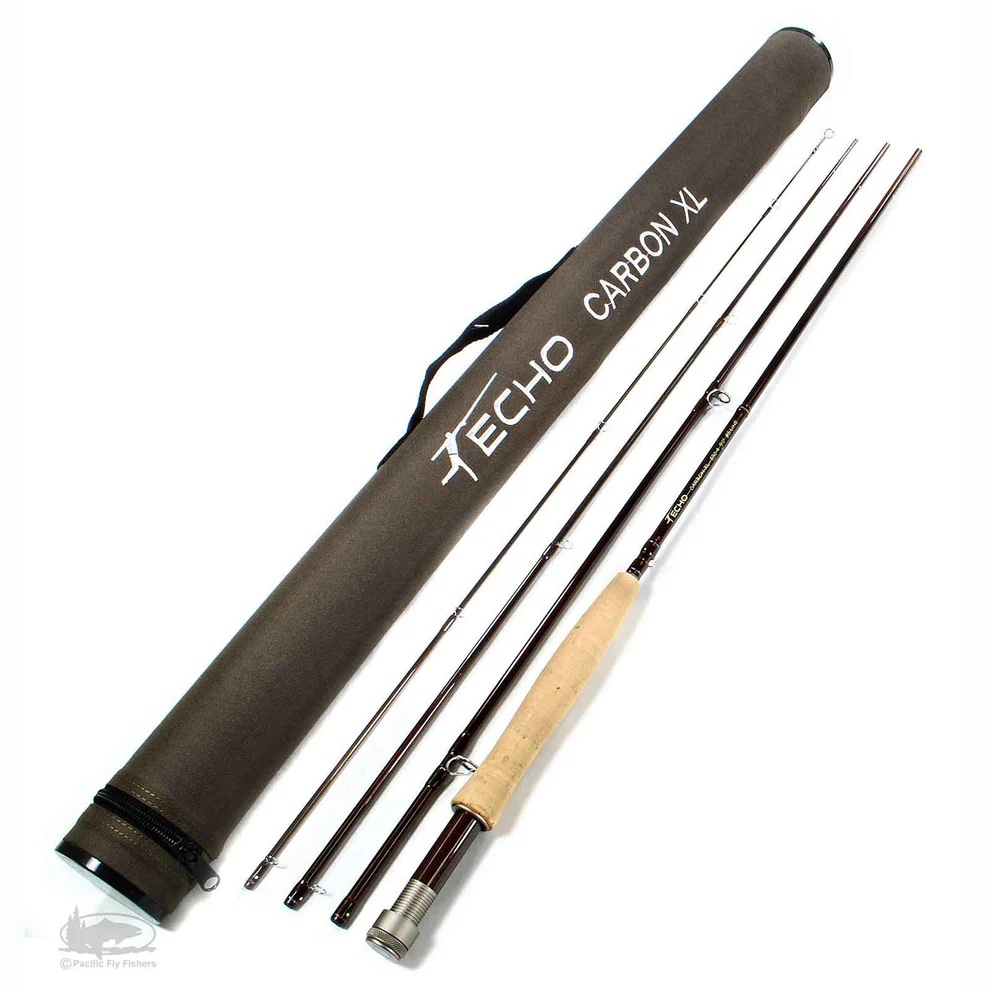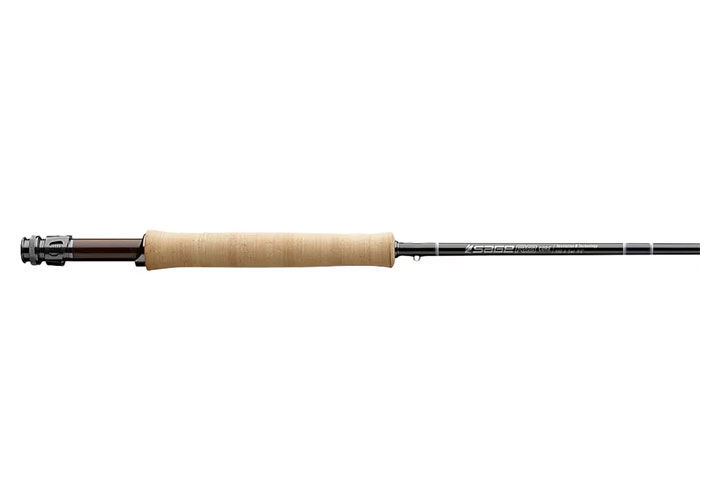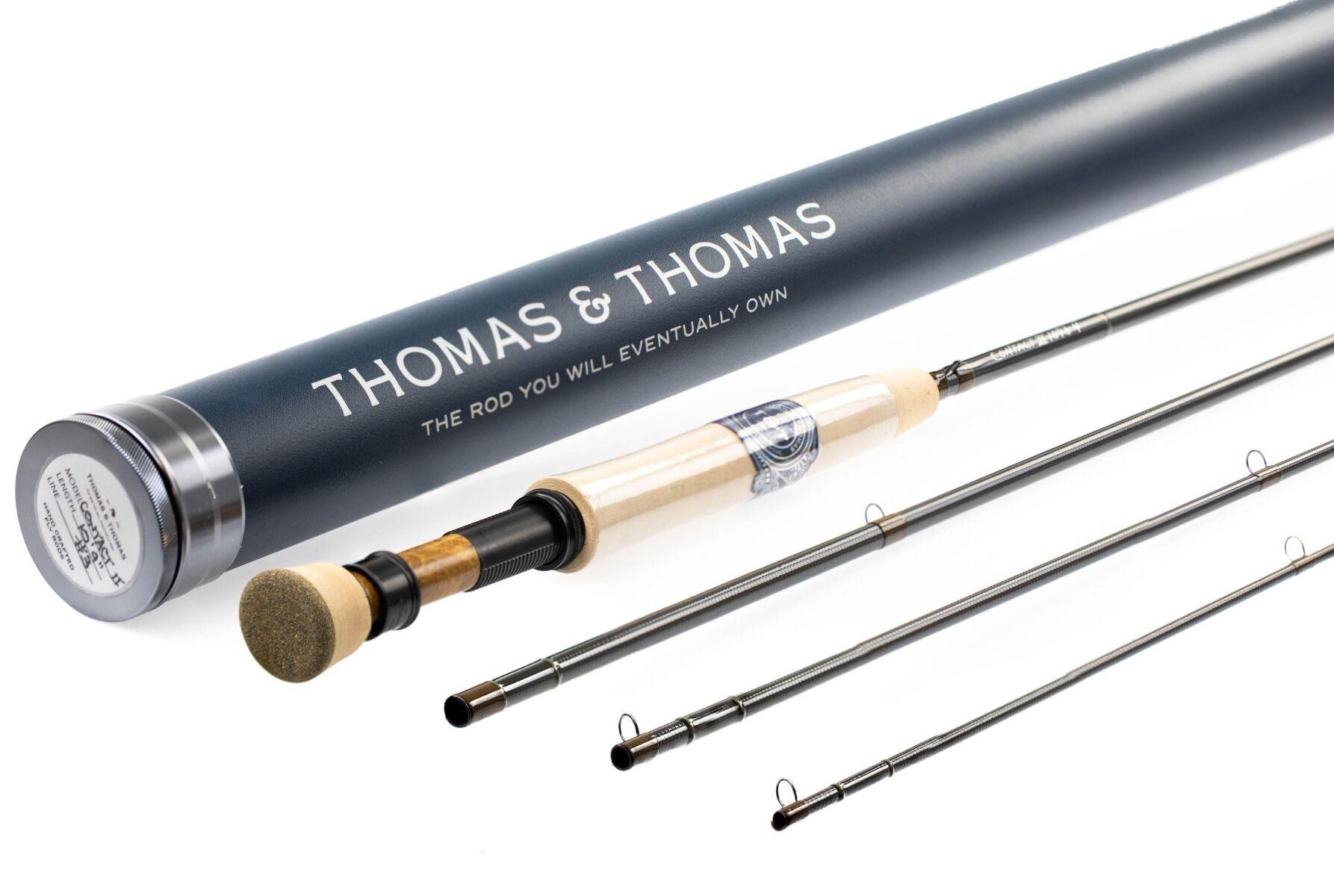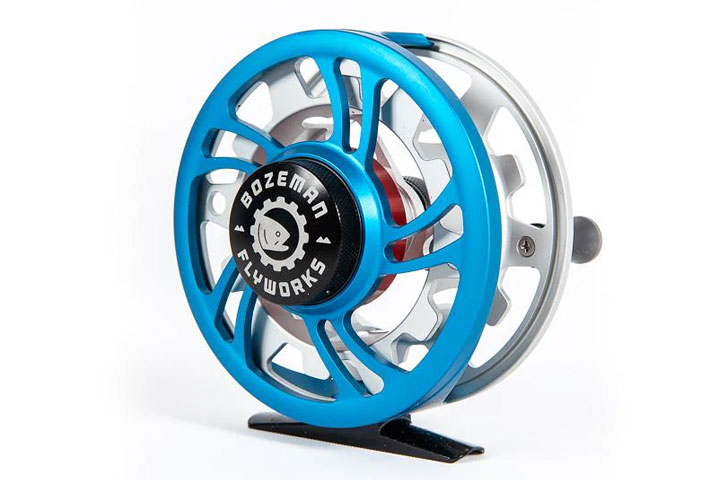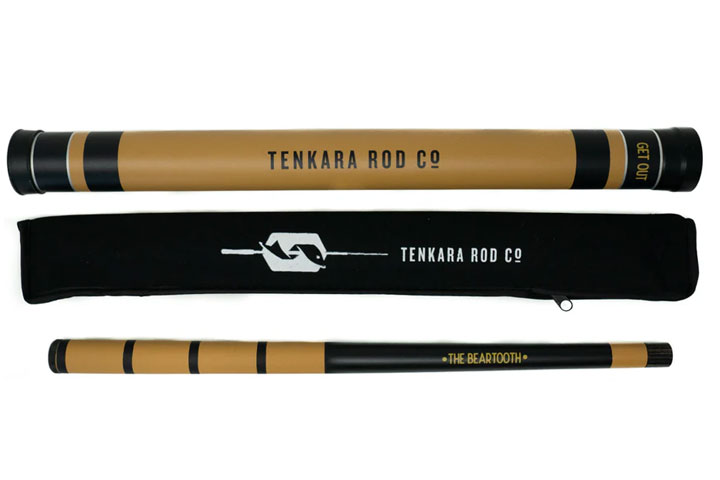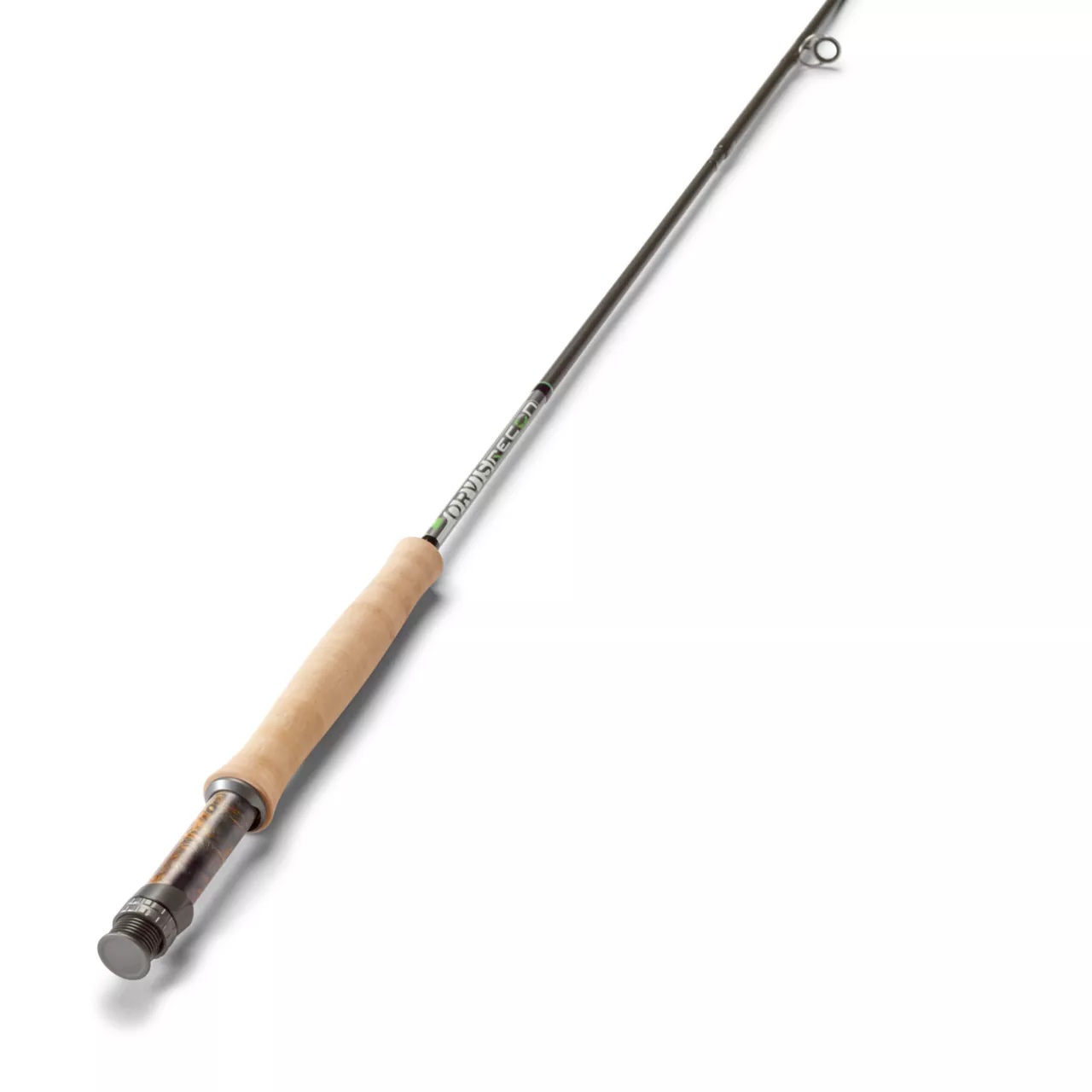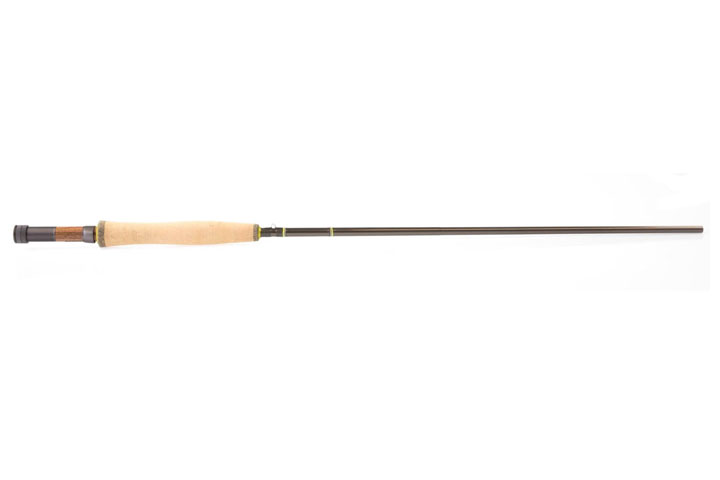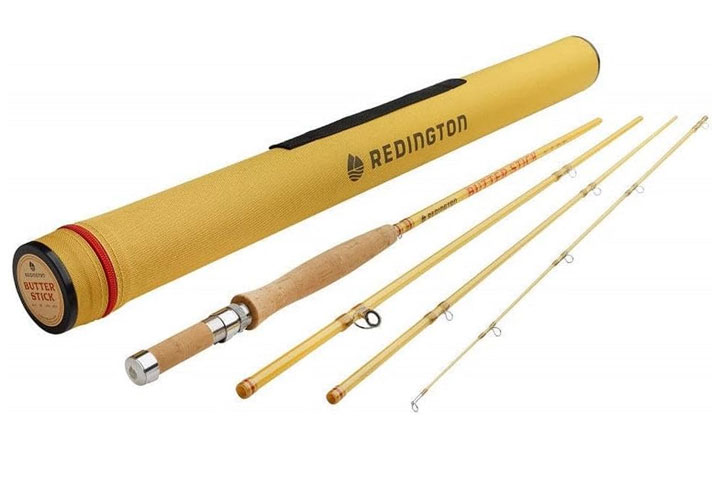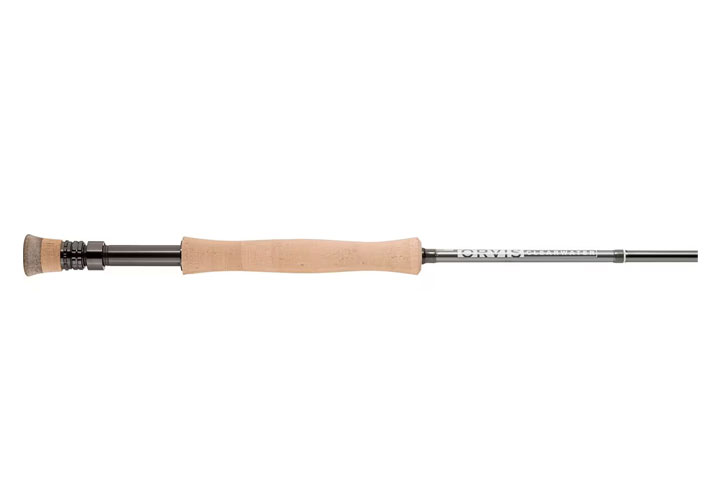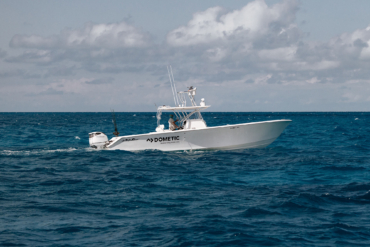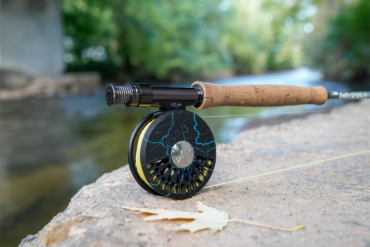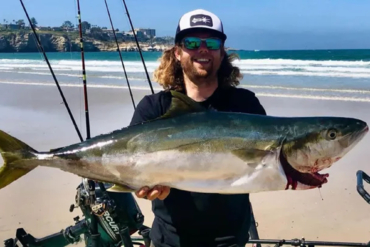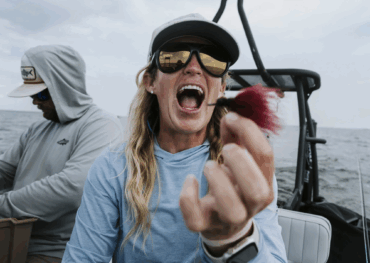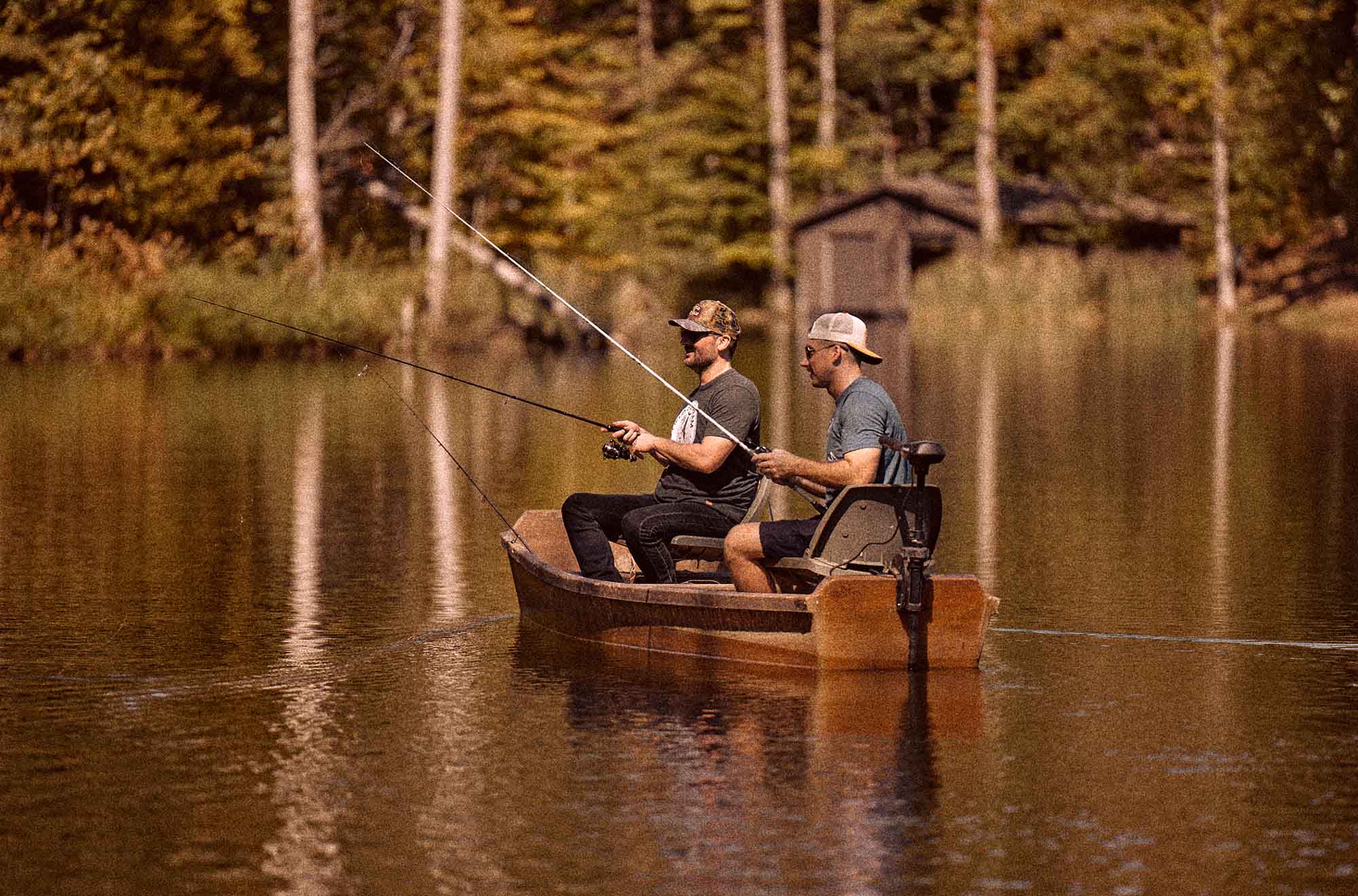The best fly fishing rods are timeless pieces of equipment. With simple care and safe storage, they can last a lifetime or more. Yet the technology keeps improving, rods are becoming more refined, and there’s always that one rod you’d like to add to your quiver.
In our annual hunt to find the best fly rods on the market, we took to the water, went to a pile of trade shows, asked guides, and scoured the internet for hidden gems. GearJunkie Hunt and Fish Editor Rachelle Schrute got the best fly fishing rods she could find (and a few not-so-great sticks) and fished in mountain streams, brutally cold waters, tropical paradises, and even lakes filled with prehistoric monsters.
We tried them all, from heavy-duty broomsticks used to chase salty evaders to the lightest, artful finesse sticks used to perfectly emulate a brand new emerger.
The GearJunkie team has likely fished more days and in more conditions than we ever have this year, and we’ve found the rods that tickle our fancy and entice the best underwater fare. Whether you’re looking for the overall performance of the Orvis Helios D or a budget-friendly option like the Echo Carbon XL, we have you covered.
Editor’s Note: We published a revised version of this guide on March 28, 2025, by adding three new rods. We awarded the Echo Carbon XL the best budget rod award and the Thomas and Thomas Contact II the best Euro Nymphing rod award.
The Best Fly Fishing Rods of 2025
Orvis Helios D Fly Rod Outfit
- Sizes: 4-14wt, 8’5″-10′
- Action: Fast
- Warranty: 25-year limited
- Sections: 4
Pros
- Immense casting power
- Lightweight
- Smooth and responsive
- Simple tip replacement program
- Super clean look
- Personalization Options
Cons
- Expensive
Echo Carbon XL
- Sizes: 2-6wt, 7'3"-10"
- Action: Moderate
- Warranty: Lifetime, Replacement tips available for purchase
- Sections: 4
Pros
- Price
- Replacement tips available for purchase at low price
- Moderate action fits wide range of casting styles
- Euro nymph specific models available
Cons
- Only goes up to a 6 weight
- Slightly heavier feel than other rods
- Not the best for heavy duty streamer fishing
Sage R8 CORE
- Sizes: 3-9wt, 8’6″-10′
- Action: Fast
- Warranty: Lifetime
- Sections: 4
Pros
- Serious strength for battling serious fish
- Corrosion resistance
- Plenty of pop for sending long-distance casts
Cons
- Expensive
- Fairly limited use case, may not be the best option if looking for versatility
Thomas and Thomas Contact II
- Sizes: 2-4wt, 10'-11'2"
- Action: Euro Nymph Action
- Warranty: Lifetime
- Sections: 4
Pros
- Superior reach with models up to 11'2"
- Unique action casts light flies, yet has power to land big fish
- Down-locking reel seat with fighting butt
- Top notch aesthetics
Cons
- Price
- Specialty rod that is mostly limited to European nymphing
Bozeman Flyworks Gold Standard
- Sizes: 5 wt, 9’
- Action: Medium- Fast
- Warranty: Within 1 year, pay $30 fee plus shipping. After 1 year, pay $55 fee plus shipping.
- Sections: 4
Pros
- Complete package
- High-quality components
- Great value
Cons
- Only comes in one size and weight
Tenkara Rod Co. Beartooth
- Sizes: 10ft
- Action: N/A
- Warranty: Lifetime
- Sections: Telescopic, 11-piece
Pros
- Lightweight, All-in-One Package
- Tiny and easy to pack
- Simple
Cons
- Too light for windy situations
- Steep learning curve for established anglers
Orvis Recon
- Sizes: 2-12wt, 7'6"-10ft
- Action: Moderate Fast
- Warranty: 25 year limited
- Sections: 4
Pros
- Price and Value
- Quick rod repair system
- Great action for trout applications
- Huge range of sizes 2 through 12 weight
Cons
- Rod tube isn't the best
- Moderate fast action isn't ideal in windy saltwater applications
- Sizes: 4-8wt, 8’6”- 9’
- Action: Medium-fast
- Warranty: Lifetime
- Sections: 4
Pros
- Price — you’ll be hard pressed to find a better fly rod for this amount
- Quality components and durability for the price
Cons
- No rod sock
- Sizes: 3-5wt, 7’-8’
- Action: Medium- Fast
- Warranty: Lifetime
- Sections: 4
Pros
- Looks sweet
- Fishes well if you have skills
- Responsive
Cons
- Not best for beginners
- Missing 9-foot option
- Sizes: 2-12wt / 7’6″-10
- Action: Medium
- Warranty: 25-year limited
- Sections: 4
Pros
- Seriously affordable
- Performance and durability that outshines many expensive rods
- A complete package, turn-key kit
Cons
- Has a bit of a heavier feel, but only slightly
- Reel is capable but not as smooth as a more expensive option
Fly Fishing Rods Comparison Chart
| Fly Fishing Rod | Price | Sizes | Action | Warranty |
|---|---|---|---|---|
| Orvis Helios D Fly Rod Outfit | $1,656 | 4-14wt, 8’5″-10′ | Fast | 25-year limited |
| Echo Carbon XL | $199 | 2-6 wt, 7’3″-10″ | Moderate | Lifetime, Replacement tips available for purchase |
| Sage R8 Core | $1,050 | 3-9wt, 8’6″-10′ | Fast | Lifetime |
| Thomas and Thomas Contact II | $895 | 2-4wt, 10′-11’2″ | Euro Nymph Action | Lifetime |
| Bozeman Flyworks Gold Standard | $356 | 5 wt, 9’ | Medium- Fast | Within 1 year, pay $30 fee plus shipping. After 1 year, pay $55 fee plus shipping. |
| Tenkara Rod Co. Beartooth | $205 | 10ft | N/A | Lifetime |
| Orvis Recon | $598 | 2-12 wt, 7’6″-10′ | Moderate Fast | 25-year limited |
| Redington Path II | $150 | 4-8wt, 8’6”- 9’ | 4-8wt, 8’6”- 9’ | Lifetime |
| Redington Butter Stick | $280 | 3-5wt, 7’-8’ | Medium- Fast | Lifetime |
| Orvis Clearwater Outfit | $429 | 2-12wt, 7’6″-10′ | Medium | 25-year limited |
i
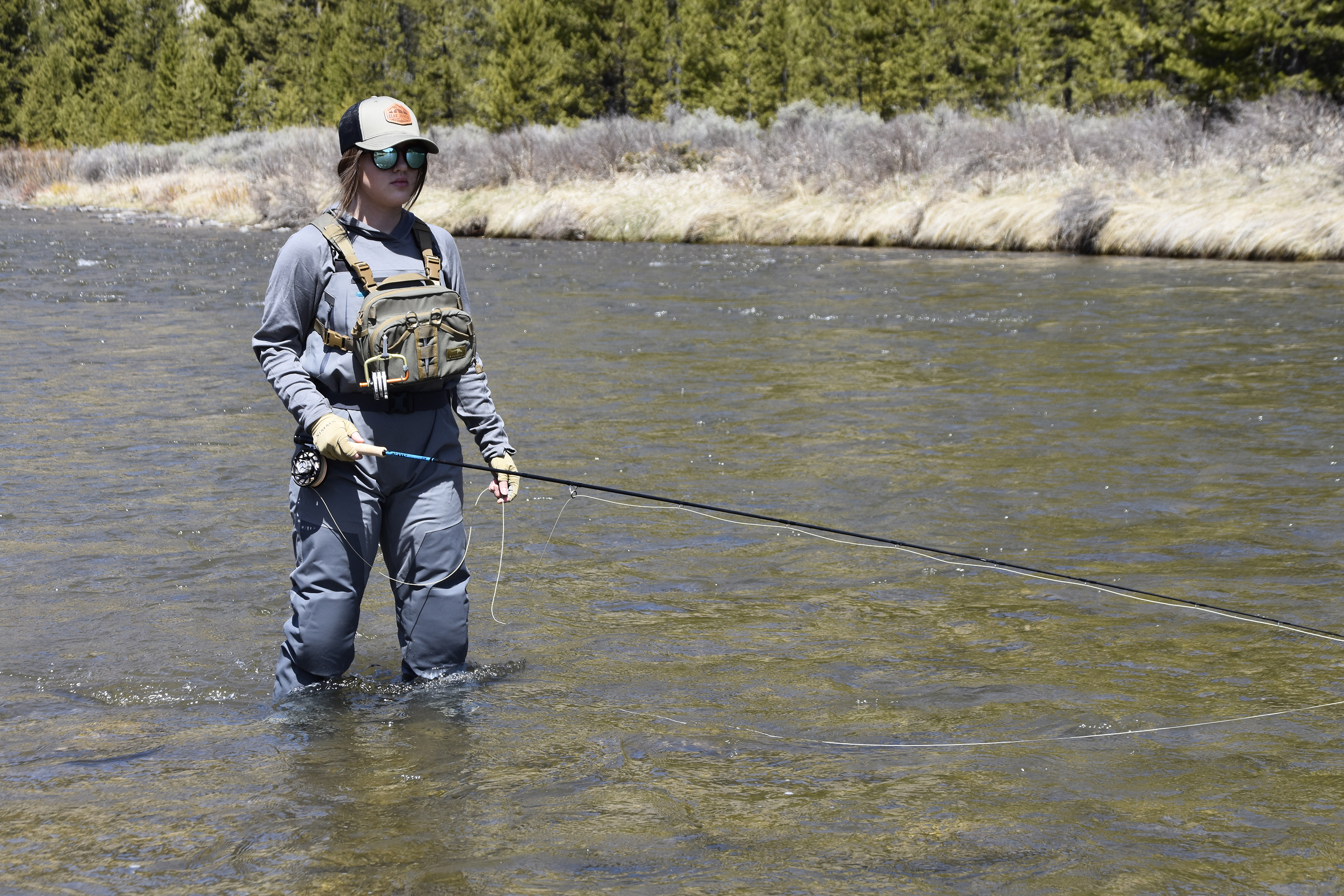
How We Tested the Best Fly Fishing Rods
Our Testing Process
Testing fly rods is a particularly interesting, enjoyable, and surprisingly difficult task. Most people employ one or two styles of fly fishing and then stick to that niche. When it comes to testing all calibers of fly fishing in a variety of environments, it really does require a team to pack their bags and get rods to waters across the globe.
Fortunately, we have such a team. Over the past year, we’ve had the pleasure to land some incredible fish, miss some fish-story-worthy monsters, and break more than a few rods, unfortunately.
We’ve caught everything from tarpon to pike, bass to trout, permit to redfish on a fly line, and we’ve had a whole lot of fun doing it.
Whether wading through river currents, casting from the back of a drift boat, sending streamers from a paddle board, or sightfishing on the front of a skiff, we’ve done a whole lot of fishing this year and hope we can say the same for the next. Figuring out which rod setups suit our pursuits best has been an absolute blast.
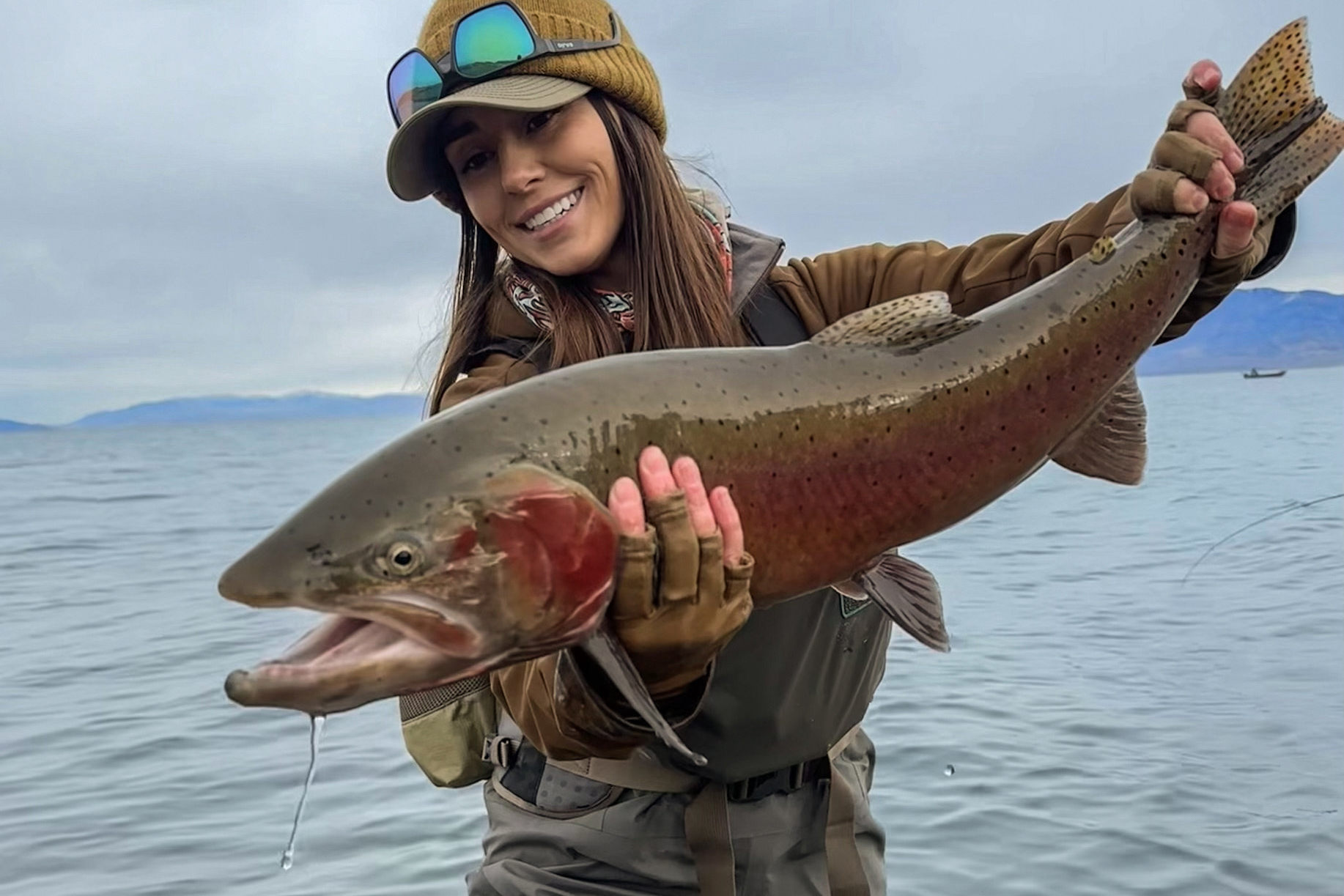
Our Expert Testers
Our Hunt & Fish Editor, Rachelle Schrute, tested fly rods in Montana’s mountain streams, the tropics off Florida’s coast, Iceland’s icy waters, and a dozen other places for a dozen other chases.
Growing up a small-stream dry fly fisherman, the challenge of expanding to new territories to test new rods has been a welcome one. Fly fishing is so diverse in its tools and methods, and ensuring we have the skills required to thoroughly test the best of the best is an ever-evolving practice.
While relatively young, Morgan Nowels has been fly fishing for 19 years. He has worked as a fly fishing guide in Utah and Wyoming chasing trout, as well as in Tennessee for bass. His fly rod arsenal is downright reckless from a financial standpoint. With experience fishing for saltwater species, trout, bass, and predatory monsters on the fly, he knows what makes a rod really shine.
With fishermen/gear testers such as Harry Spampinato, who travels the world chasing tropical beasts, and Sean Jansen, who often finds himself sending dry flies in Yellowstone National Park days before dipping a line in salt as he paddles his way to Baja, we have many styles and experiences at our helm. Rob Simpson and Ben Hickok contributed their expertise to this guide as well.
Combined, our team has tested thousands of sport fishing products and has the expertise and experience to help you select the best gear for just about any skill level, fly fishing situation, and budget.
If you’re in the market for other fishing gear, we have you covered. Be sure to check out our guides to the Best Fishing Waders, Fishing Hats, and Fishing Sunglasses.

Buyer’s Guide: How To Choose the Best Fly Fishing Rods
Fly fishing offers an angler a balance of relaxation and challenges, but choosing the best fly fishing rod can feel less than relaxing and offer an unwanted challenge. Whether you are new to fishing or an experienced angler, choosing the right fly fishing rod for your intended use will have a massive impact on your success as an angler and how much you enjoy fly fishing.
We’ve done our best to distill the key considerations when shopping for a fly fishing rod, including rod weight, length, material, and action, to help you make an informed decision.
Fly Fishing Rod Length
Short Rods (6-8 Feet)
Shorter rods are usually in the 6 to 8-foot range and are best for tight, brushy streams where space is limited and casting can be difficult. As a general rule, shorter rods will cast more accurately than their longer counterparts. However, there are significant drawbacks, mainly in mending. With a short rod, you lose the ability to mend at any distance, so these rods are best for short, tight drifts.
Shorter rods like the Redington Butterstick often have dry fly-specific tapers. You’ll mostly see these lengths in trout rods designed for delicate dry fly work. If that’s the type of fishing you do, these specialized rods are a blast to fish.
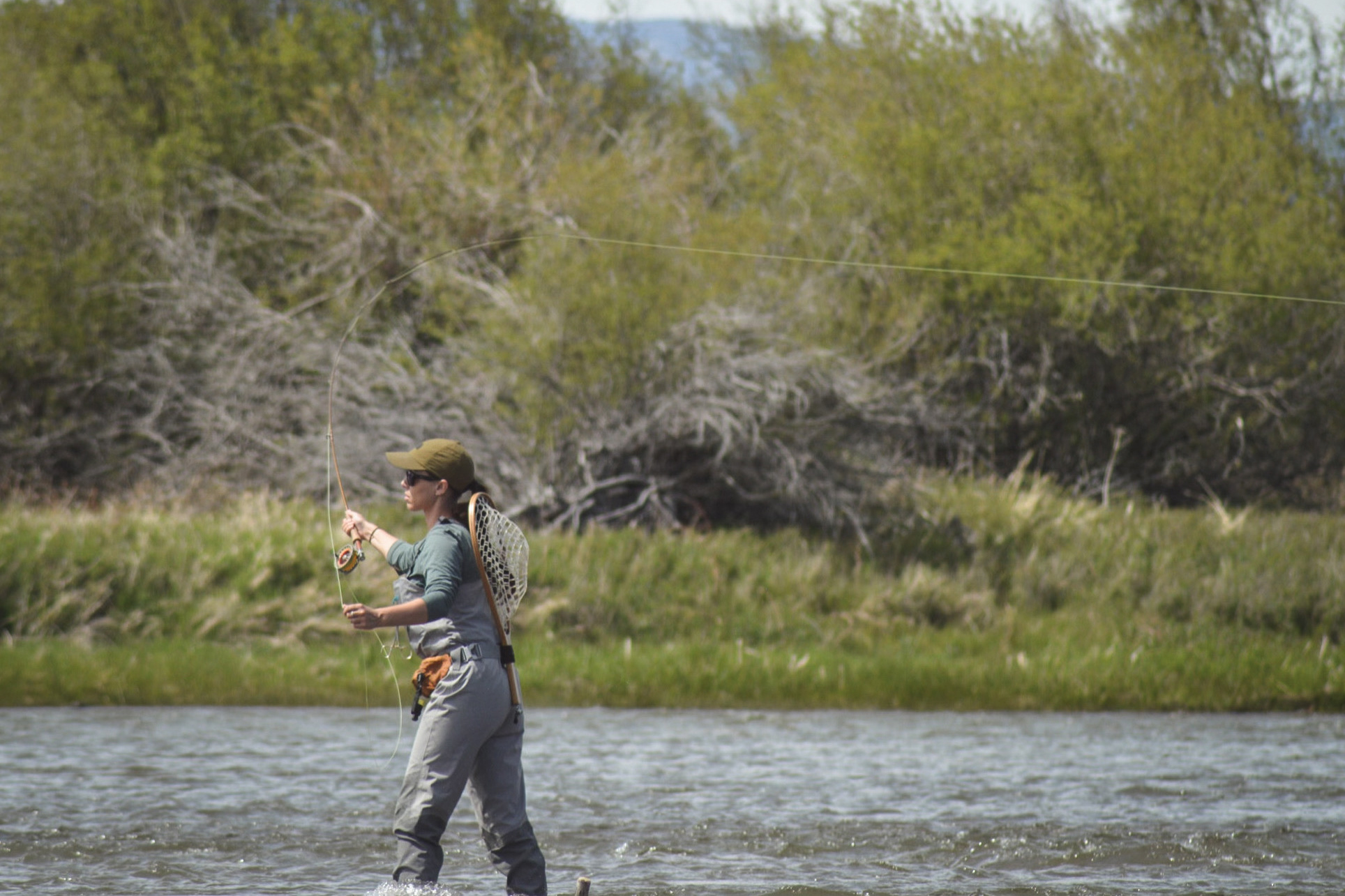
Medium Rods (8.5-9 Feet)
A medium rod length, generally 8 and a half to 9 feet, is the most versatile and most common length of rod, with the 9 foot 5 weight being the timeless standard for trout. They’re suitable for a wide range of fishing conditions and generally offer a good balance of casting distance, control and mending capability.
If you aren’t looking for a technique-specific rod and need an all-around workhorse, this is where you should be. Some, like the Orvis Helios D Fly Rods come in range of lengths, including medium to long. Others, like the Bozeman Flyworks Gold Standard only come in one length.
Long Rods (9.5+ Feet)
Long rods in excess of 9 and a half and 10 feet are ideal for line control post-cast. If you nymph fish and are constantly mending line, a rod that’s 10’+ will drastically improve your day on the water. The added length with allow you to pick up and move more line than a shorter rod. The added length is also a benefit in high sticking and tightline methods where you’re fishing just past the rod tip as the long rod will extend your reach. Our favorite is the Thomas and Thomas Contact II, which comes in an 11’2″ option.
Longer rods also cast further, so they’re great for stillwater and big western rivers. You may be wondering, “If they’re great for casting distance, shouldn’t I get that for saltwater fishing?” No. You shouldn’t. Longer rods are much more difficult to cast accurately, and saltwater flats fishing requires precise casts to visible targets.

Fly Fishing Rod Weight
The weight of the rod corresponds to the weight of the fly line it is designed to cast. Fly rods typically range from 1 to 14 weight, with lower numbers suitable for smaller fish and flies and higher numbers designed for larger, powerful fish and heavier flies.
Notice how we mentioned the flies, not just the fish size. When casting large flies like the Drunk and Disorderly, mass is needed to move the mass of the fly. To effectively get the fly to the target, you need more mass from the fly line, which means you’ll need a rod designed to cast the heavier line.
Rod weight selection comes down to both the flies you’re going to throw, and the species of fish you’re chasing. You never want to be undergunned for either one of those factors. Here’s an example of where we’ve seen people mess this up:
If you’re chasing trout, you may find yourself wanting to throw extra large streamers. Trout are small and not all that powerful, so you’d think a 4 or 5 weight would be fine. The 4/5 offers plenty of power for the fish, but it’s severely undergunned for those large flies. You’ll need to bump it up to a 6 or 7 weight.
Below are the different designations and what we use them for.
1 to 4 Wt
These weights are great for small streams and delivering delicate presentations on lighter line weights. They are a perfect choice for small trout, panfish, and other small fish species. The Orvis Clearwater Outfit comes in weights of 2 to 12, which is a huge range. If you stick with the smaller weight, you’ll want to stick with smaller streams.
5/6 Wt
This is a common sweet spot for weights and a great starting place for any new angler, as these weights offer versatility and are suitable for a wide range of freshwater fishing. 5- and 6-weight rods offer a great balance of delicacy and power, making them excellent for trout, bass, and larger panfish.
7 to 9 Wt
These weights are for larger freshwater species and light saltwater fishing and are best suited for bass, pike, and steelhead. They can better handle heavier flies, big streamers, and windy conditions than 5 and 6-weight rods. The Sage R8 CORE comes in a range of weights (3-9wt), but we preferred the 9-foot, 8wt in instances where we needed exceptional power and precision.
10+ Wt
These weights are somewhat specialty, intended for heavy-duty rods meant for large saltwater species like tarpon, tuna, and sailfish. These heavy-weight rods can handle larger flies and the heavier line needed to land bigger fish.
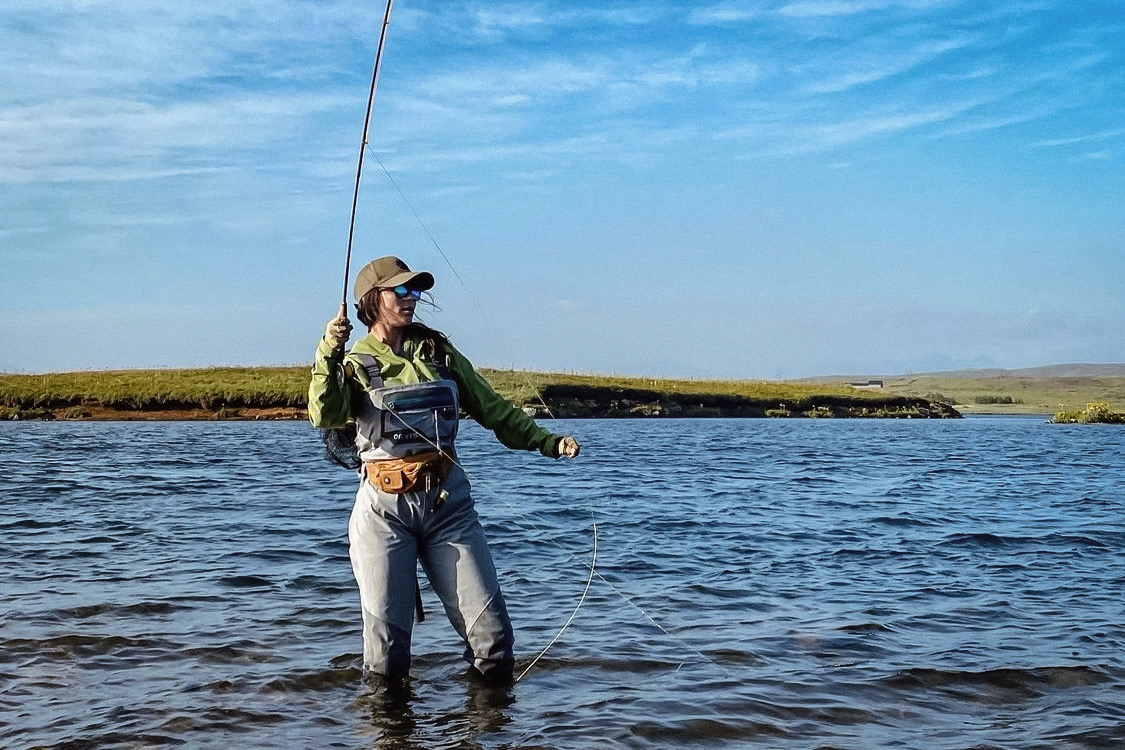
Fly Fishing Rod Action
The action of a fly rod is heavily dependent on the weight, power, and construction of a rod. Action is referred to as a range from slow to fast, and generally refers to how much the rod bends, and more specifically where it bends, when casting and under the load of fighting a fish, or picking up a heavy fly.
A fast action rod bends very little in the majority of the rod extending away from your hand, and does most of its bending near the tip. A slow action offers a greater amount of bending across the entire rod, meaning the tip of the rod travels a greater distance.
Fast Action
Generally, a faster action offers quicker, stronger casting and is particularly good for longer-distance casting and windy fishing conditions. It also makes picking up streamers and heavier flies much easier, whereas a slower action can be too spongy to lift a heavy fly. Fast-action rods, like the Orvis Helios D Fly Rods, are also more responsive to your movements, allowing you to react quickly and set a hook.
Medium Action
A medium-action rod, like the Echo Carbon XL, offers a great balance of power and flexibility, making it versatile enough to handle a wide range of fishing situations. Many rods like the Redington Path II fall into the medium-fast action category.
Slow Action
A slow action provides for more delicate presentations and is ideal for small streams, but the sponginess makes it more difficult to react quickly and do things fast action rods can do better, like quickly setting a hook or picking up and quickly casting streamers and heavier flies. We haven’t included any slow action rods on this list yet.

Fly Fishing Rod Materials
Fly rods are usually made from fiberglass, bamboo, or graphite (carbon fiber). The different materials offer different benefits and drawbacks, and some differences are so subtle that they are better suited to experts.
Graphite (Carbon Fiber)
While we call them graphite rods, the term is a bit of a misnomer, as they are actually carbon fiber and not graphite. Graphite alone is a crystalline material and is brittle on its own. Consider how easily a mechanical pencil lead breaks, which, ironically, is also a misnomer. You obviously wouldn’t make a rod out of that. Carbon fiber, which we’ll continue to call graphite, offers great strength, durability, and lighter weight than both fiberglass and bamboo.
Graphite rods are lightweight and extremely strong. This means that even longer rods are still light and easy to handle without fatigue when fishing all day. Graphite tenkara rods, like the Beartooth Co. Tenkara Rod, are also great for carrying into the backcountry or on backpacking trips. The strength of a graphite rod also makes them a good choice when you fish heavy nymphs, bigger streamers, and heavier dry dropper rigs.
Fiberglass
Less expensive but heavier than graphite, fiberglass offers a different feel with slower action, making it a good option for small stream fishing and making delicate presentations. More modern fiberglass rods can be built with different actions, but where a faster action and a lighter rod are concerned, graphite is generally a better choice for most.
Bamboo
The natural flexibility of bamboo offers a smooth action and sensitivity that other composite materials lack. That sensitivity allows you to feel every aspect of fishing, from the weight of a fish on the line to fly presentation and a unique feel when casting. Unless the traditional look and the unique feel of a bamboo rod are high on your priority list, there are a few drawbacks to bamboo rods.
They are usually heavier than modern composites, a nice bamboo rod can be prohibitively expensive as they are handcrafted by experts, and bamboo rods require a greater amount of maintenance, like cleaning, and oiling, in addition to more delicate handling that composites don’t require.
Other Considerations
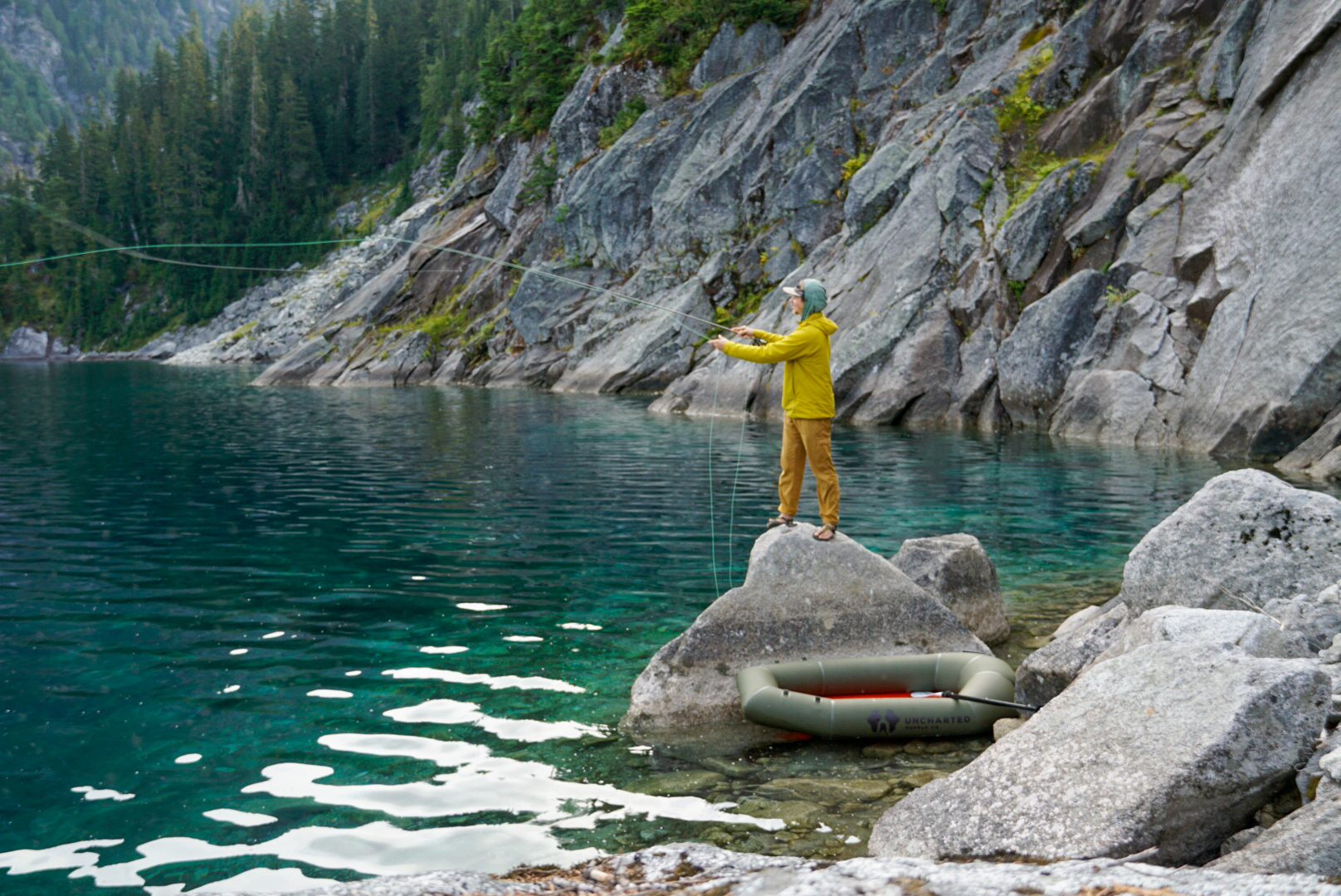
Packing and Rod Pieces
Fly rods come in different configurations, from one-piece to multi-piece designs. Multi-piece rods like the Redington Path II are usually four pieces and are popular for their portability, while one or two-piece rods may offer slightly better handling and performance due to fewer connection points, giving them a more continuous bending action.
Rod Handle and Reel Seat
The handle or grip of a fly rod is essential for comfort and control. Handles are typically made from cork and have similar contours from rod to rod, but one handle may fit your hand slightly better than another, and it is worth handling a few rods so you know what to expect from different rods and brands.
We’ve generally focused on the most typical freshwater and saltwater fly rods meant for most sport fishing, where the reel mounts on the reel seat at the rear of the rod and creates balance with the weight of the pole ahead of your hand. However, some rods, like two-handed, switch, and spey rods, offer more handles beneath the reel so that two hands can be used for longer, stronger casting of heavier lines and flies, used when targeting much bigger fish.
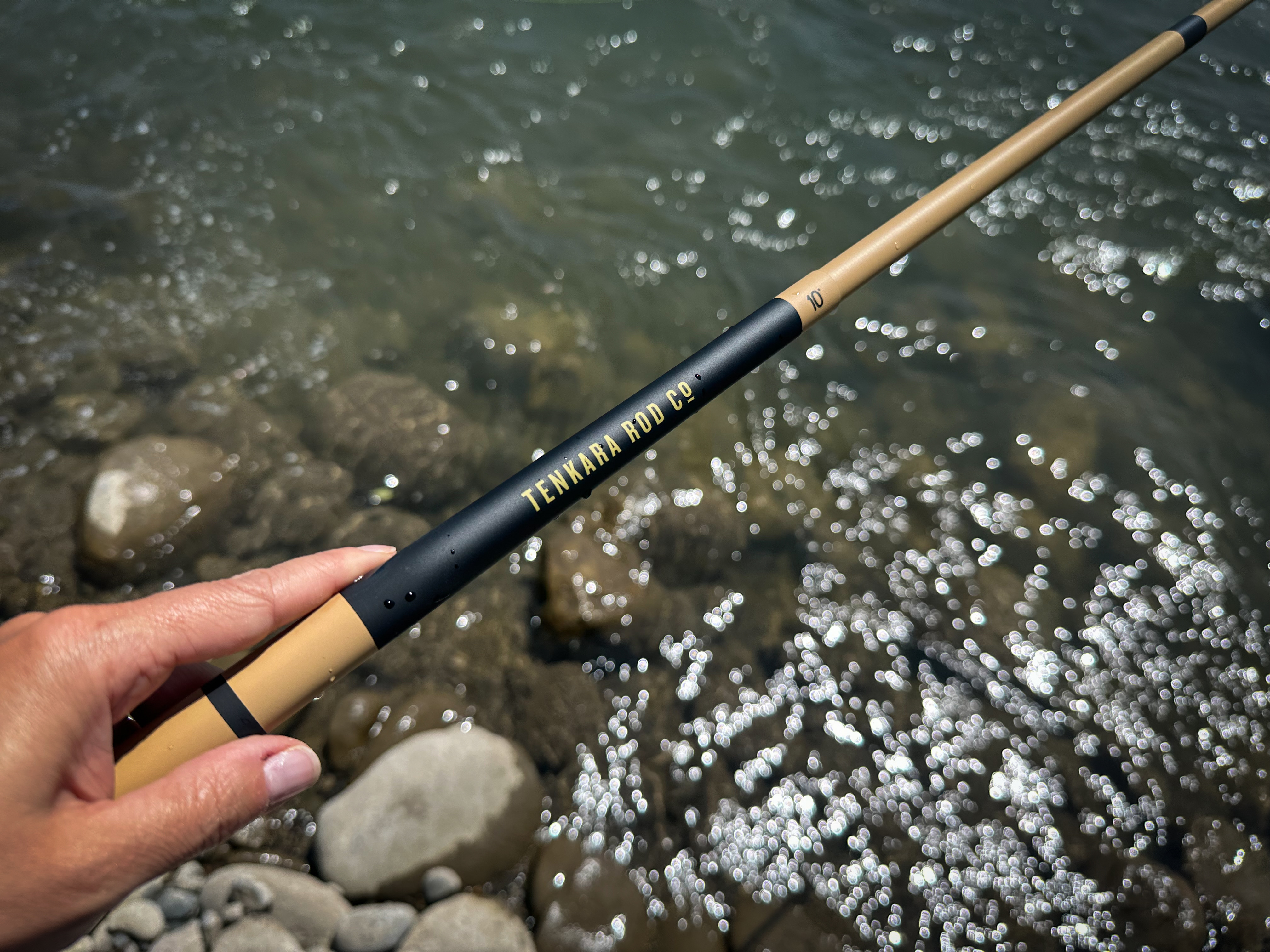
Tenkara
Tenkara rods are a special beast in the world of fly fishing, and an entire article should be focused on this specific style of fishing and the equipment involved. In short, it is a fun fly fishing style that often uses very long medium-action rods and no reel. While the rods collapse and are very versatile, a traditional 9 foot 5 weight fly rod with a reel is best for building a fly fishing experience.
The lack of a reel also makes it hard or impossible to make long casts, as well as to target large fish. The line drag produced by a reel helps to fight a large fish, whereas the length, action, and weight of a tenkara rod are exclusively used to fight fish.
Large fish and breaking lines can actually damage tenkara rods, while traditional fly fishing setups are more capable and forgiving for larger fish and a wide range of fishing. Tenkara rods are also typically quite long, 12 and 13 feet and a typical 9-foot fly rod can be easier to manage in general.
Personal Preference
The overlap of terms like weight and action, as well as the effects they have in combination with rod lengths and the different feel of materials, creates a plethora of characteristics that distinguish similar rods from one another. It may take a lot of years fishing on different rods to really dial in your favorite weight, size, and action. The reality is that you’ll likely end up with more than one rod and use the rod that best matches the fishing you do with it.
While there is no Goldilocks of fly fishing rods, and one rod can’t reasonably do everything, there is a sweet spot that offers great flexibility and can handle most normal fly fishing situations well. That generally agreed upon sweet spot is a 5-weight, graphite, 9 foot to 9 foot 6 inches, medium or medium-fast action rod.
Someone targeting bigger fish may consider a 6 weight, as it can still be sensitive enough for handling a dry fly and more delicate presentations but still provide enough power to turn over heavier streamers. It’s ultimately a choice that depends on your intended use and preference, while our personal go-to is a 4-piece, 9-foot, 5-weight, fast action like the Orvis Helios D Fly Rod.
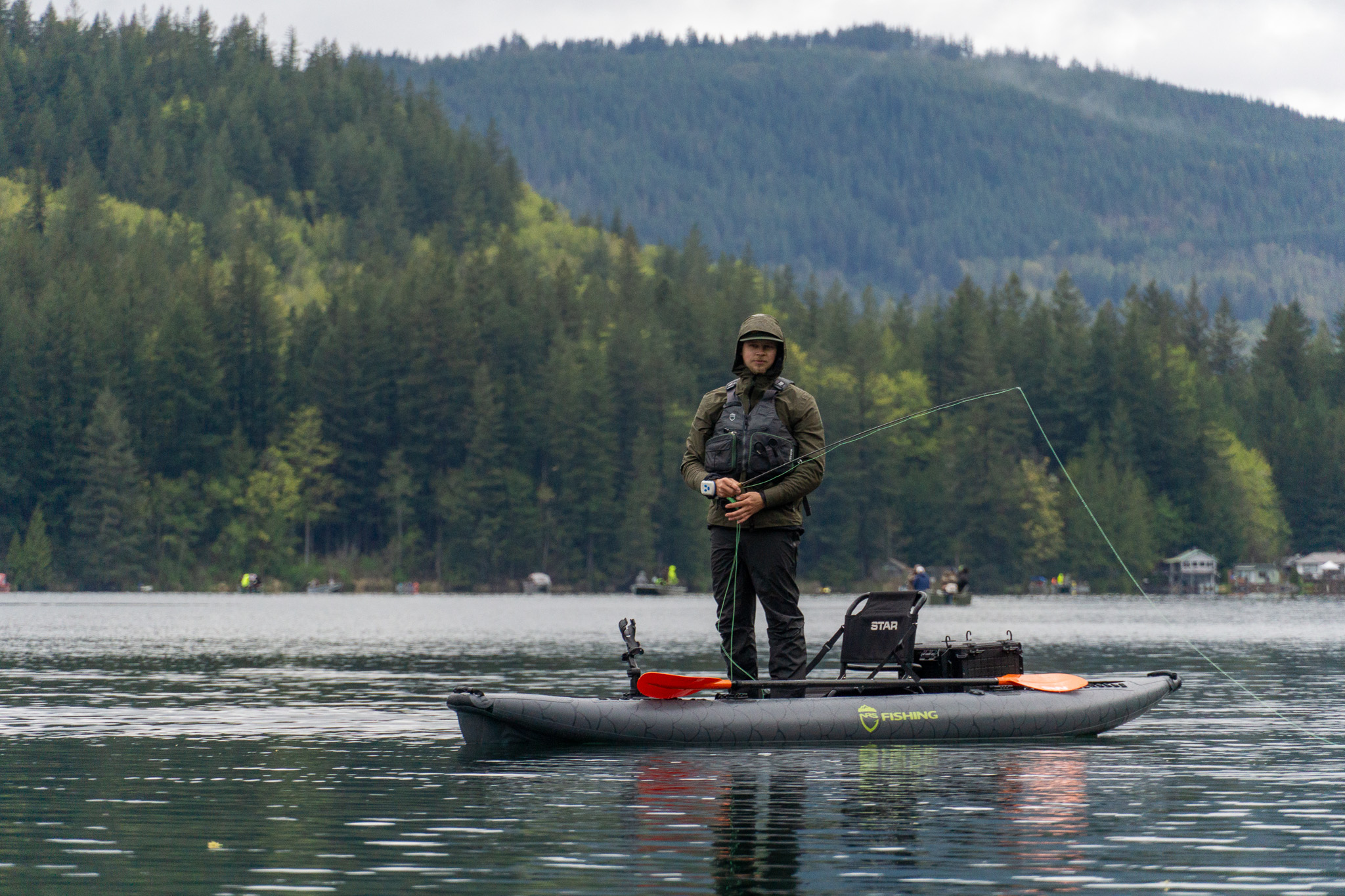
Price & Value
A fly rod can range dramatically in price. Beginners can find great value in rods under $300, while more advanced users will be able to appreciate better handling and feel from higher-end rods that can easily exceed $1,000.
Budget
Budget fly rods will set you back $150-300. While you can find fly rods for less than that, they will be very low quality and be, in our opinion, a waste of your hard-earned cash. Once you hit $150 most rods will have some form of warranty program that allows you to replace broken rods for a small fee. Some, like the Echo Carbon XL, have replacement tips available for purchase.
In this price range, people often jump to a fly rod and reel combo kit. This takes a lot of the guesswork out of setting up a new combo for the beginner, and options like the Bozeman Flyworks Gold Standard offer great value.
These rods will last a lifetime, however, you’re giving up a few things. First, the rods in the budget range will be heavier and will feel considerably more tip-heavy despite not having that much more physical weight. They will also tend to be more of a moderate action, so you won’t be throwing laser beam casts across the river. Some budget rods attempt to be fast action, but we’ve found they end up feeling more like a stiff broomstick than a fly rod.
Mid-Tier
Fly rods in the $400-650 range offer the best blend of value and performance. If you want to step up your game but don’t have the budget to spring for the latest flagship rod from brands like Orvis and Sage, this is where you’ll want to be.
These rods are great because they often feature the same technology that was used in a company’s prior flagship rod. The Orvis Recon is one such rod. Orvis used the construction techniques from the Helios 3 series (the predecessor of the new Helios) to design the Recon. That rod cost about a thousand bucks, but now you can get a rod with the same technology for $598.
You may not have the latest and greatest in rod manufacturing, but you’re getting the prior iteration of the latest and greatest.
Premium
A premium fly rod is going to leave nothing to be desired. Rods that are $900+ are going to be the best a rod manufacturer has to offer.
In the past, manufacturers pushed hard in this category to create fast action rods that could maximize casting distance. Over time, they’ve really dialed in the best action to blend casting feel and casting distance while generating insane line speeds. They also worked hard to make fly rods as light as possible.
As of late, each manufacturer is pushing hard on casting accuracy and are designing rods with specilaized carbon wrapping processes to eliminate side-to-side rod tip movement throughout the cast. Rods like the Sage R8 will put the fly exactly where you want it.
Premium rods will also have the best components and look like a true work of art. Fly fishing is the most artistic form of fishing, and we can appreciate a rod that speaks to the beauty of the sport.
Frequently Asked Questions
A 9-foot, 5-weight rod is ideal for beginners, and most fishing in general. It offers versatility across various conditions and fish species, making it an excellent all-around choice that is easy to learn with and provides a balance of power and control, and isn’t too unwieldy to use on small streams.
A 5-weight rod is generally more versatile, suitable for a wider range of fishing scenarios and species, including trout and bass, while a 4-weight rod is better suited for smaller streams and more delicate presentations. If you are undecided, the 5-weight rod is likely the safer option, as it lends itself to more fishing scenarios than a 4-weight.
When choosing your first fly fishing rod, consider 9 foot, 5 weight, medium action rods for versatility and ease of use. Determine whether or not the majority of your fishing is covered by this combination, or if you need a slightly longer rod, faster or slower action, and lighter or heavier weight.
Reference our guide for how to determine these factors, then choose a reputable brand that offers a good warranty, and a balance between quality and your budget.
The fly fishing market is saturated with domestic and foreign manufacturers, but the best fly rod brands are those known for their quality, durability, and customer service. There are many companies that have built strong reputations over the years for producing high-performing fly rods across various price ranges, making them the safer options, whereas you roll the dice as to whether or not you will get a good rod from a lesser known foreign manufacturer.
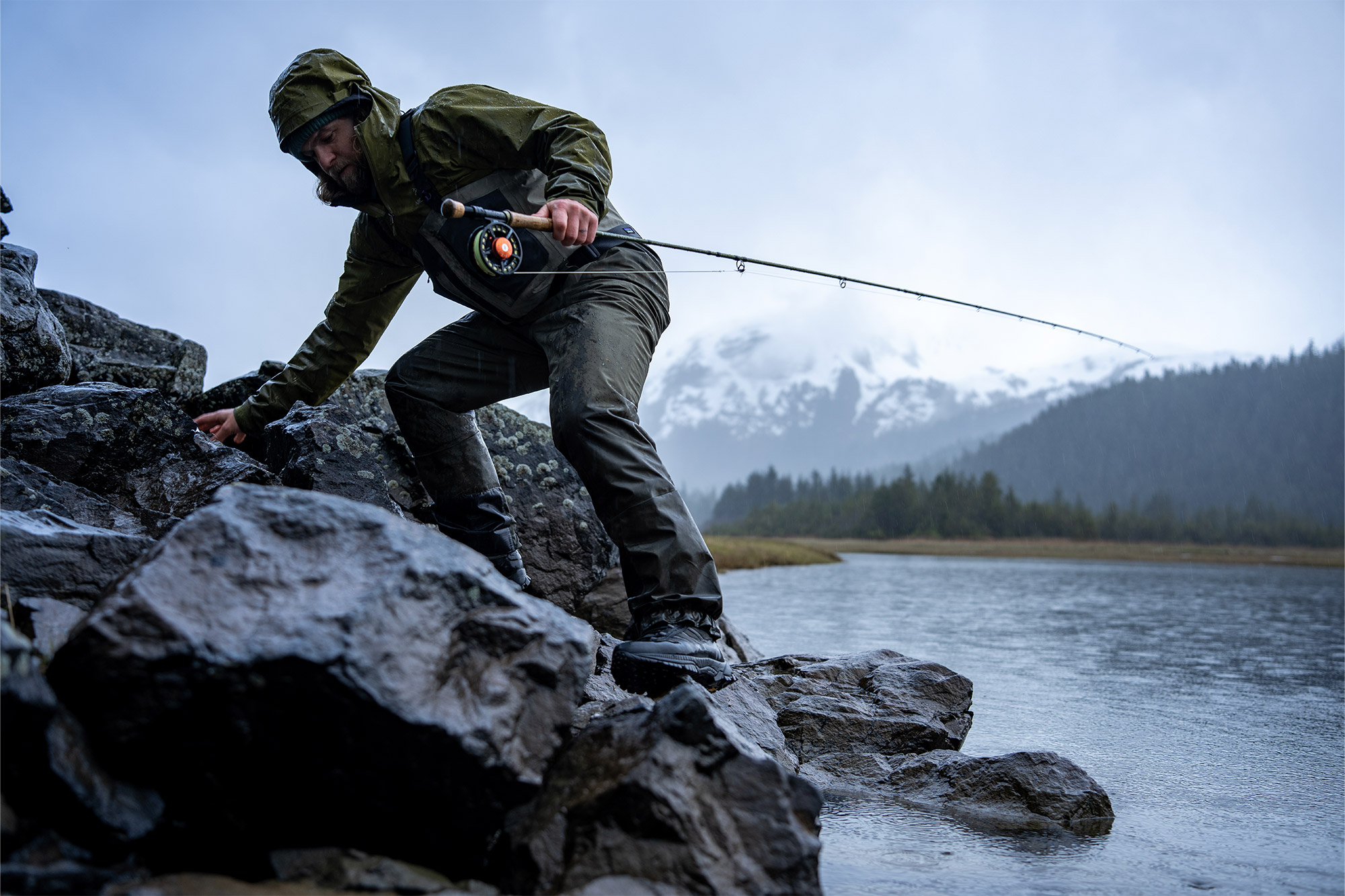
The Best Fishing Waders of 2025
We tested the leading fishing waders , including options from Patagonia, Simms, and Orvis, to find the best of 2025.
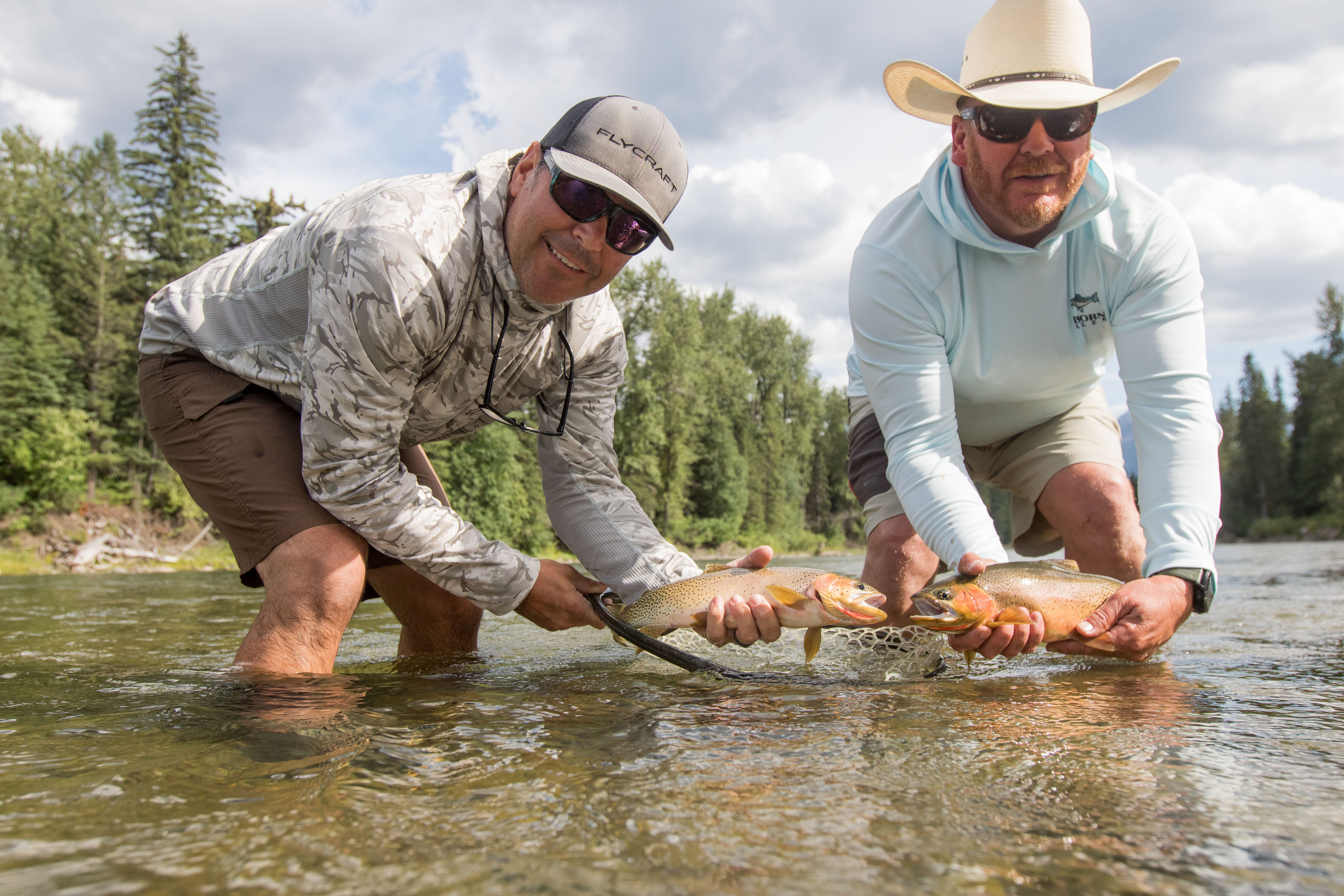
The Best Fishing Sunglasses of 2025
Sunglasses can make or break your success on the water. Without the right pair of glasses, you may not be able to get the job done.
